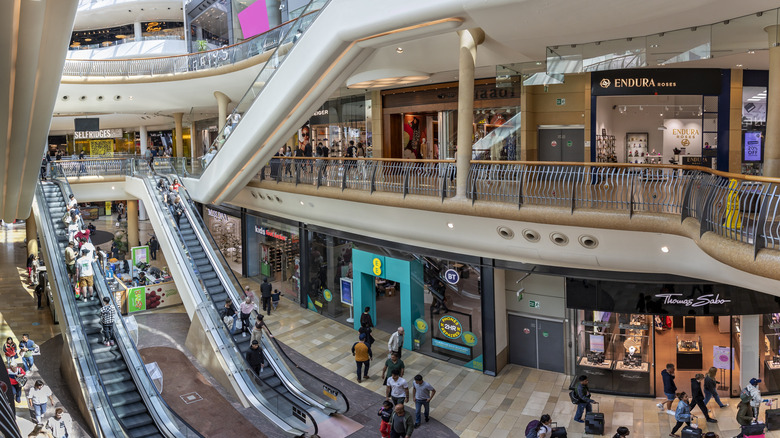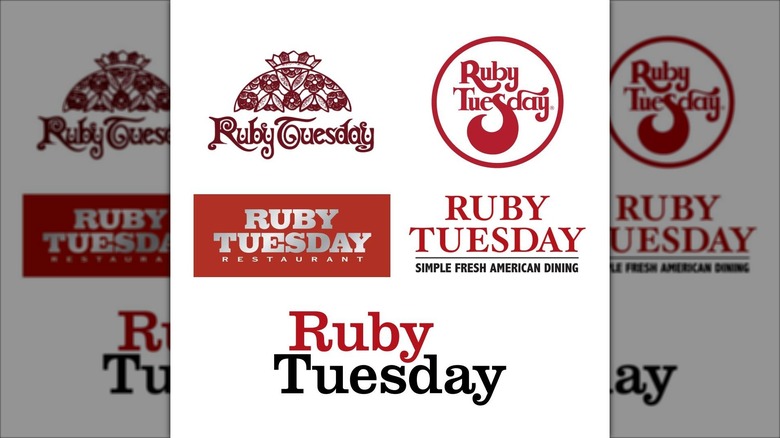This Beloved Mall Eatery Had An Iconic Logo, Until It Got A Makeunder
Logos help loyal customers spot their favorite restaurant wherever they are. Whether you're cruising down a highway or are traveling on the other side of the country, the colors, font, and shape of a restaurant logo signal that the food you like to eat is near. And if you're old enough to have conscious memories of restaurant chains in the '90s, you probably remember the retro Ruby Tuesday's logo. The casual restaurant chain, best known for its burgers and its iconic Garden Bar (a robust salad bar), had a bold and bright red logo with a slightly quirky, 70s-style font. That is, until the chain decided to get a makeover.
In 2006, out went the nostalgic red typeface, and in came a more minimalist logo. The new font, Clarendon, looks more suited for a financial consultant rather than a laid-back bar-and-grill concept. While the chain is still considered a casual restaurant, the change to a more professional-looking logo was part of a bigger shift in branding. To change how customers perceived the restaurant, Ruby Tuesday went with a darker color palette, a simple font, and clean lines for a more "grown-up" look.
Why Ruby Tuesday changed its retro logo
Before 2006, Ruby Tuesday was a "mall restaurant", with a majority of its locations either inside or near a mall or shopping center. That wasn't necessarily a bad thing — after all, it's nice to have somewhere dependable to eat at after shopping. In fact, it's pretty common for shoppers to go to the mall specifically for the food — think about the joy that mall favorites like Wetzel's Pretzels, Mrs. Fields, and Panada Express provide.
Yet, Ruby Tuesday joined other restaurants going through a rebrand in the early 2000s to shed the mall food image and outdated branding. Their goal was to reposition themselves as a more sophisticated dining experience, not just a quick stop after Abercrombie & Finch. Aside from a logo change, that also meant an interior remodel with more minimalist decor, and elevated menu items like sirloin and premium pasta dishes.
This modernization of the casual chain restaurant took place in similar concepts like TGI Friday's and Applebee's. These chains, like Ruby Tuesday's, also scaled back on their quirkiness and retro charm to instead present themselves as new and sleek. While it might have helped Ruby Tuesday survive the early 2000s, the tactic (amongst other uncontrollable industry factors) hasn't fared so well in recent years. Ruby Tuesday filed for bankruptcy in 2020. The chain continues to struggle. Ruby Tuesday has been disappearing, losing nearly half its locations between 2007 and 2018.

